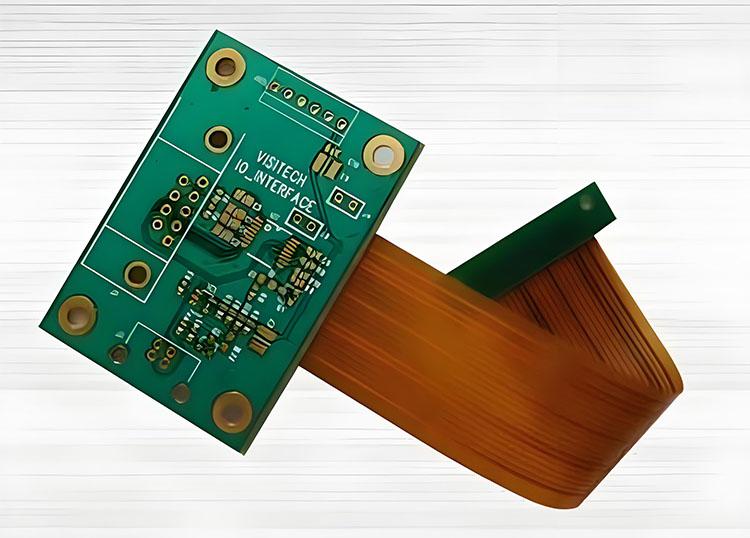Introduction to rigid-flexible boards

Rigid-flex boards combine the properties of both flexible and rigid boards by integrating thin flexible layers with rigid layers into a single component. This combination forms a circuit board that goes beyond the traditional 2D planar design, expanding into a 3D spatial concept. While this innovation offers significant convenience in product design, it also presents considerable challenges.
Designers of Rigid flex boards can use a single component to replace complex printed circuit boards connected by multiple connectors, cables, and ribbon cables. This approach enhances performance and stability while limiting the design scope to one component. Similar to folding a paper swan, designers can optimize the use of space by bending and folding the circuits.
Rigid flex boards are multi-layer printed circuit boards that feature both rigid and flexible layers. A typical four-layer rigid-flex PCB consists of a polyimide core, which is copper-clad on both sides. The outer rigid layers are made of single-sided FR4, laminated onto both sides of the flexible core to form a multi-layer PCB. Rigid flex boards are widely used across various industries, but their production is more time-consuming and costly due to the mixed use of different materials and the complex manufacturing processes involved. When manufacturing multi-layer Rigid flex boards, the processing of the flexible layers differs significantly from that of the external FR4 layers. Each layer, made of different materials, must be laminated together before drilling and plating. As a result, creating a typical four-layer rigid-flex PCB can take 5 to 7 times longer than producing a standard four-layer rigid PCB.
The primary applications of Rigid flex boards include aerospace, such as high-end aircraft-mounted weapon navigation systems, advanced medical equipment, digital cameras, portable camcorders, and high-quality MP3 players. Rigid-flex PCBs are most commonly used in the manufacturing of military aircraft and medical devices. Rigid-flex PCBs offer significant benefits for military aircraft by improving connection reliability while reducing weight. Additionally, the reduced overall size of the components provides further advantages.
Although rigid-flex PCBs are more expensive than traditional rigid boards, they offer an ideal solution for many projects. By using flexible substrates for interconnections instead of multiple PCB connections, rigid-flex PCBs reduce space usage and weight, which are critical for many design requirements.
Due to their bendable and foldable characteristics, rigid-flex PCBs can be used to create custom circuits that maximize available space. This capability reduces the space occupied by the entire system. Although the overall cost of rigid-flex PCBs is relatively high, as the industry matures and advances, these costs are expected to decrease, making them more cost-effective and competitive.
Gekunflex is at the forefront of this innovative technology, providing high-quality rigid-flex PCB solutions that meet the demanding requirements of aerospace, medical, and military applications. Choosing Gekunflex ensures that your designs benefit from the best in reliability, performance, and space optimization.

- कला
- कारण
- शिल्प
- नाच
- पेय
- फ़िल्म
- फिटनेस
- खाद्य पदार्थ
- गेम्स
- बागबानी
- स्वास्थ्य
- घर
- साहित्य
- संगीत
- नेटवर्किंग
- अन्य
- दावत
- धर्म
- खरीददारी
- खेल-कूद
- थिएटर
- स्वास्थ्य


